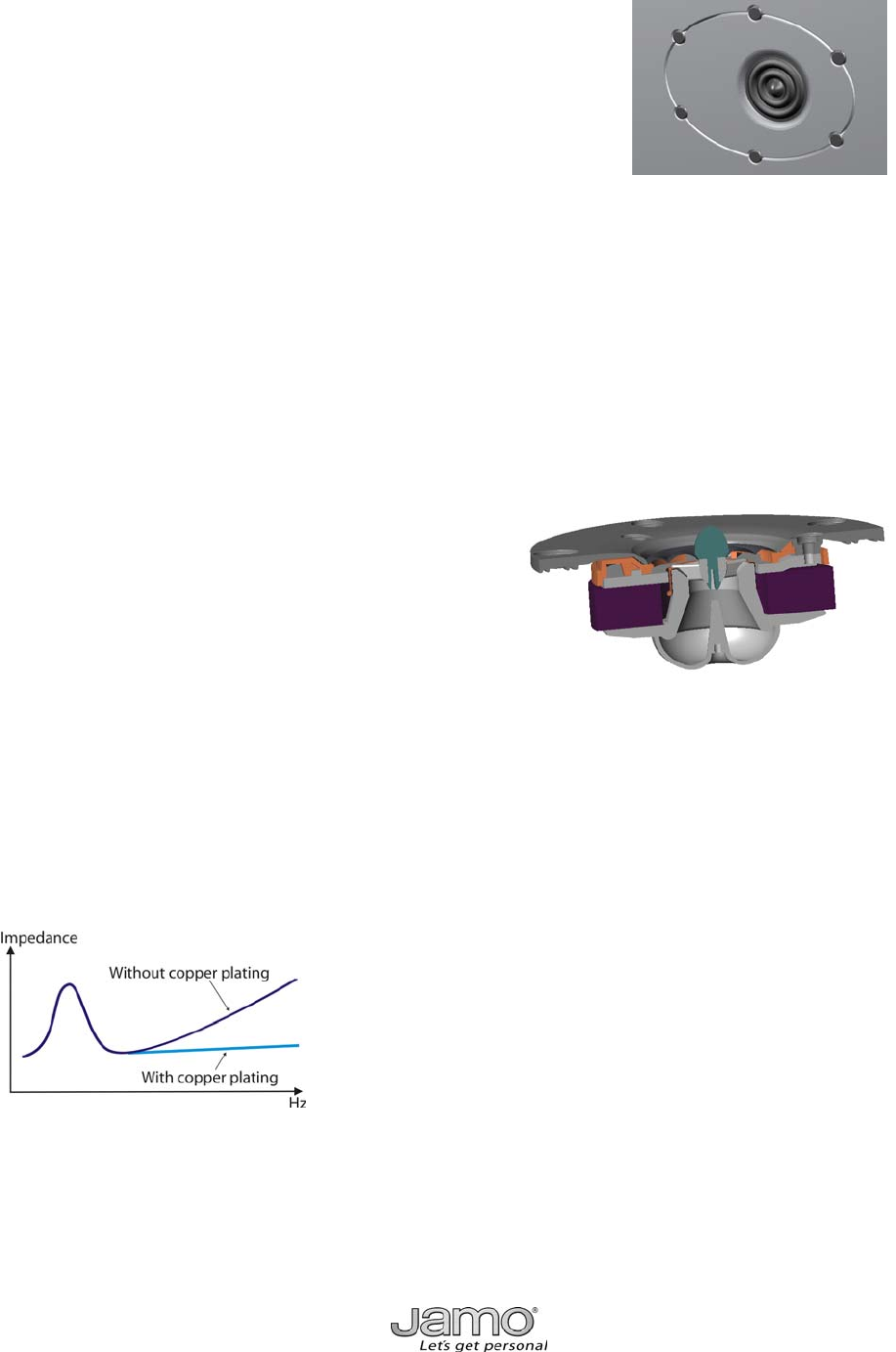
8
Drivers
Tweeter
The tweeter in the D 4 range, has already been well acclaimed
in Jamo products, as it is used in the Jamo D 7 THX Ultra2
system, winner of the EISA award as “High-end Home Theatre
2002/2003”.
However, to suit the exact purpose in D 4, we developed a
new, asymmetric front baffle.
The tweeter was chosen for 3 main reasons:
1. Extremely low distortion
2. Totally freedom of accentuation of “s” sounds.
3. The low range extension
The 1" tweeter features a completely new design of the diaphragm/dome called Dual
Concentric Diaphragm.
The coated textile diaphragm looks like two rings, one on the “inner” and one on the
“outer” side of the voice coil – hence the name “Dual Concentric”.
The quite eye-catching centre plug has two
purposes: It is a wave-guide and it clamps the
diaphragm.
The purpose of clamping the middle of the dome is
to eliminate out phasing of the treble at high
frequencies. At high frequencies only the cone area
just around the voice coil is able to follow the voice
coil whereas the middle of the dome typically
breaks up and actually is in opposite phase –
resulting in zero, or very limited output from the tweeter. By clamping the
middle of the dome and only using a ring of the cone area on each side of the voice coil,
the tweeter is able to reproduce frequencies up to 40kHz.
The magnet features a vented pole piece leading into a chamber at the backside. The
chamber and the “ventilation hole” in the pole piece are tuned in for achieving the very
low resonance frequency at 600Hz (normal resonance frequency for a tweeter is around
1.5k Hz).
Furthermore the pole piece is copper plated in the
magnet gap in order to reduce eddy currents. The
purpose of this is to obtain linear impedance throughout
the full frequency range and thus a linear treble
reproduction.
The voice coil former is made of aluminium for optimum
heat disposal. The voice coil is made of cupper plated
aluminium wire, because aluminium weighs less than
cupper, but the copper plating is needed because of its conducting qualities.
The “wire” from the driver’s terminal to the voice coil is a thin litz wire. Usually, the voice
coil wire continues to the terminals. However, litz wire features much higher compliance
and therefore it has less influence of the movements of the voice coil.
D 4 asymmetrical tweeter design














